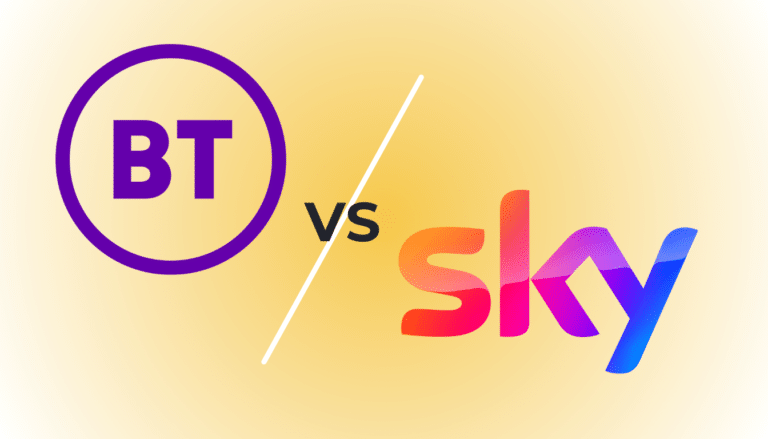Welcome to our guide on the basics of broadband switching. In this section, we will provide you with essential information about broadband switching, including the techniques, systems, and technologies involved in the process. Switching your broadband provider can be a straightforward task, and we are here to help you navigate through it.
Key Takeaways:
- Broadband switching is a simple process that allows customers to change their providers.
- Ofcom rules protect customers by allowing them to leave their current provider without penalty if promised broadband speeds are not met.
- Loss of service during a switch should not exceed one working day, and providers must offer compensation for any issues.
- The launch of the new switching process, One Touch Switch, has been delayed, so existing processes must be followed.
- If both your old and new providers use the Openreach network, you can follow a one-stop switching process where your new provider arranges the transfer for you.
How to Switch Broadband in the UK
Switching broadband providers in the UK is a straightforward process that begins with checking if you are still under contract with your current provider. If you are not, it’s time to explore available deals and choose a new package based on your needs. To make this process easier, you can use our broadband comparison service that provides a comprehensive overview of different providers and their offerings.
Choosing the Right Package
When selecting a new broadband package, consider factors such as your internet usage habits and budget. Assess the speed and data allowance that will best suit your needs. Additionally, take into account customer service and reliability by reading provider reviews. Evaluate any additional costs associated with the chosen package, such as router charges or line installation fees.
The Switching Process
Once you have chosen a new provider, contact them to initiate the switching process. If both your old and new providers use the Openreach network, you can enjoy a hassle-free one-stop switching process where your new provider arranges the transfer for you. However, if you are switching to or from a different network, you will need to cancel your current contract and start a new one with the new provider.
While switching providers on the Openreach network typically results in minimal downtime, it’s important to note that the overall time it takes to switch broadband can vary. Generally, the connection process takes around two weeks, with approximately 30 minutes of actual downtime during the switch. However, if an engineer visit is required or if you are changing the type of broadband connection, the process may take longer. It’s crucial to plan ahead and coordinate dates with both your current and new providers to minimize any potential disruptions.
By following these steps, you can make the switching process simple and convenient. Remember to consider contract length, costs, and reviews when choosing a new provider, as well as to stay informed about your current contract terms. Switching broadband providers can help you access better deals, faster speeds, and an improved internet experience overall.
Table: Broadband Comparison

Reasons to Switch Broadband Providers
Switching broadband providers can provide several benefits for consumers. When considering a switch, there are various factors to take into account, such as price, internet speed, connection reliability, and customer service. Here are some of the primary reasons why people choose to switch:
- Price: Price is often a key consideration when it comes to switching broadband providers. Many customers look for better deals and promotions that can help them save money on their monthly bills.
- Internet Speed: Another crucial factor is internet speed. Customers may switch providers to access faster speeds and improve their online experience.
- Connection Reliability: A reliable internet connection is essential for many activities, such as working from home, streaming content, and online gaming. Customers may switch providers if they experience frequent disconnections or poor network performance.
- Customer Service: The level of customer service provided by a broadband provider can greatly impact the overall experience. Switching to a provider with better customer support and responsiveness can lead to a more satisfactory service.
According to a recent survey conducted by Uswitch, a significant number of switchers reported positive outcomes. The survey found that 77% of switchers ended up with cheaper packages, and 78% found the switching process to be easy. These results demonstrate that switching broadband providers can yield tangible benefits for consumers.
Ultimately, the decision to switch broadband providers should be based on individual needs and preferences. It is essential to carefully evaluate different providers, compare their offerings, and consider the specific requirements for price, internet speed, connection reliability, and customer service. By doing so, consumers can make an informed decision that meets their specific needs and ensures a satisfactory broadband experience.
“Switching broadband providers can offer a range of benefits, including potential cost savings, improved internet speed, better connection reliability, and enhanced customer service.”
| Reasons to Switch | Percentage of Switchers |
|---|---|
| Cheaper packages | 77% |
| Easy switching process | 78% |
Table: Percentage of switchers who experienced cost savings and found the switching process easy (source: Uswitch survey).
How Long Does It Take to Switch Internet Providers?
Switching internet providers can be a smooth process, but it’s important to understand how long it may take to complete the switch. The actual connection process typically takes around two weeks, although this doesn’t mean you’ll be without internet for the entire duration. In fact, the downtime during the switch is usually minimal, lasting only around 30 minutes. However, certain factors may affect the timeline of your switch.
Engineer Visit and Installation Time
If an engineer visit is required, such as when switching to a different type of broadband connection, the process may take longer. The availability and scheduling of the engineer can impact the overall time it takes to complete the switch. Additionally, installation time for new equipment or setting up a new broadband connection may also add some extra time to the process.
Cancellation Notice
When switching internet providers, it’s important to be aware of the cancellation notice period. Typically, providers require a 30-day notice before terminating the service. This means that you should plan ahead and coordinate the dates with your current and new provider to minimize any potential downtime. Be sure to check your contract for any specific requirements regarding cancellation notices.
Switching internet providers can be a seamless experience if you plan ahead and stay informed about the process. By understanding the potential timeframes involved, such as the connection process, engineer visit, installation time, and cancellation notice, you can ensure a smooth transition to your new provider.
| Process | Estimated Timeframe |
|---|---|
| Connection Process | Around two weeks |
| Engineer Visit and Installation Time | Varies depending on availability and requirements |
| Cancellation Notice | Typically 30 days |
Remember, every switch is unique, and the timelines provided here are general estimates. It’s always a good idea to check with your new provider for specific details regarding the switching process and any potential delays that may arise.
In conclusion, switching internet providers may take around two weeks, with minimal downtime during the switch. Factors such as the need for an engineer visit, installation time, and the cancellation notice period can affect the overall timeline. By planning ahead and coordinating with both your current and new provider, you can ensure a smooth transition to your new internet service.
Cancelling Your Broadband Service and Early Termination Charges
When it comes to cancelling your broadband service before the end of your contract, it’s essential to be aware of any early termination charges that may apply. These charges can vary depending on your provider and the terms of your contract. To avoid any unexpected fees, it’s important to check with your current provider beforehand but you can get an estimate by using our early termination fee calculator.
However, there is a bright side to cancelling your broadband service. You have a 14-calendar-day cooling-off period, during which you can change your mind and cancel your request to switch without penalty. This cooling-off period allows you to evaluate your decision and ensure that you are making the right choice for your broadband needs.
It’s important to note that the cooling-off period starts from the day your service is activated, so make sure to keep track of this timeframe. If you decide to cancel within the cooling-off period, you will be entitled to a full refund of any charges you have already paid.
Remember, if you are not satisfied with your current broadband provider or have found a better deal elsewhere, cancelling your service and switching to a new provider can be a beneficial move. Just make sure to be aware of any potential early termination charges and take advantage of the cooling-off period if you change your mind.
| Important Points | Details |
|---|---|
| Early Termination Charges | Check with your current provider about any fees that may apply if you cancel your service before the end of your contract. |
| Cooling-off period | You have a 14-calendar-day cooling-off period during which you can cancel your request to switch without penalty. |
| Refunds | If you cancel within the cooling-off period, you should be entitled to a full refund of any charges you have already paid. |
Choosing the Best Broadband Provider for You
When it comes to selecting a broadband provider, it’s essential to consider your usage habits and budget. Different providers offer various packages tailored to meet different needs. Start by assessing how you use the internet. Are you a casual user who mainly checks emails and browses the web, or do you require fast speeds for streaming and online gaming? Understanding your usage patterns will help you determine the specific broadband package that suits you best.
Price is another crucial factor to consider. While it’s tempting to go for the cheapest option, remember that the cheapest may not always provide the reliability or customer service you expect. Take the time to read customer reviews and compare prices from different providers to find a balance between affordability and quality.
Reliability is paramount when it comes to broadband providers. Look for providers known for their consistent connection speeds and minimal downtime. Reliable broadband ensures a smooth internet experience without frustrating interruptions. Reading customer reviews can give you valuable insights into a provider’s reliability and customer satisfaction levels.
| Considerations | How to Evaluate |
|---|---|
| Budget | Compare prices and packages from different providers |
| Usage habits | Assess how you use the internet and choose a package accordingly |
| Customer service | Read reviews and determine the provider’s reputation for customer support |
| Reliability | Check customer reviews and ratings for consistent connections |
“Choosing a broadband provider is an important decision that can greatly impact your internet experience. By considering your usage habits, budget, customer service, and reliability, you can make an informed choice that suits your needs. Don’t rush the decision. Take the time to compare providers and read reviews to ensure you select the best broadband provider for you.”
FAQs About Switching Broadband
Switching broadband providers can be a complex process, and it’s normal to have questions along the way. In this section, we address some frequently asked questions to help you navigate the switching process with ease.
Switching Process
Q: How do I switch broadband providers?
A: The process of switching broadband providers involves a few simple steps. First, check if you are still under contract with your current provider. If you are not, use a broadband comparison service to explore available deals and select a new package. Contact your chosen new provider and follow their instructions for switching. If both your old and new providers use the Openreach network, your new provider will arrange the transfer for you.
Costs and Cancellation Fees
Q: Are there any costs involved in switching broadband providers?
A: The cost of switching broadband providers can vary. Some providers may offer incentives, such as waiving installation fees or providing discounted introductory rates. However, it’s essential to be aware of any potential cancellation fees from your current provider if you are still under contract. Always check the terms and conditions before making the switch.
Braille Documents and Contract Length
Q: Can I receive Braille or alternative format documents from my new broadband provider?
A: Broadband providers in the UK are required by law to provide accessible formats of their documents, including Braille, large print, or audio formats, upon request. Contact your new provider in advance to arrange the provision of these documents if needed. Additionally, consider the length of your new broadband contract. Take into account any minimum contract terms and ensure they align with your desired commitment level.
By addressing these frequently asked questions, we hope to provide you with the information you need to make an informed decision and have a smooth broadband switching experience. Remember to always consult with your chosen providers and review their terms and conditions before proceeding. Switching providers can be an excellent way to access better deals, improved services, and a more satisfying internet experience.
Tips for a Smooth Broadband Switching Experience
Switching broadband providers can be a seamless process with a little preparation and attention to detail. Here are some valuable tips to ensure a smooth transition:
Notify Important Contacts:
Before making the switch, make a list of important contacts that rely on your current broadband service. This can include online streaming accounts, banks, or any other services that require your internet connection. By informing them in advance, you can avoid any potential disruption to your access or services.
Transfer Necessary Services:
If you have additional services tied to your broadband, such as home phone or television, be sure to coordinate their transfer with your new provider. This will help ensure that these services are seamlessly integrated into your new broadband setup, saving you time and minimizing any inconvenience.
Check Equipment Compatibility:
Before switching, it’s important to check if your existing equipment, such as routers or modems, is compatible with the new broadband service. Some providers may require specific hardware configurations or support certain technologies. Verifying compatibility beforehand will help prevent any compatibility issues and ensure a smooth transition.
Update Wi-Fi Settings:
After the switch, it’s important to update your Wi-Fi settings to ensure a seamless connection to your new broadband service. This includes updating your network name (SSID) and password, as well as any other settings specific to your new provider. By doing so, you can swiftly reconnect your devices and enjoy uninterrupted internet access.
By following these tips, you can make the transition to a new broadband provider a hassle-free experience. Remember to notify important contacts, transfer necessary services, check equipment compatibility, and update your Wi-Fi settings. With a little preparation, you can enjoy a seamless switch and reap the benefits of a new broadband connection.
Conclusion
In conclusion, switching broadband providers in the UK offers numerous benefits, including cost savings, faster internet speeds, and an improved overall internet experience. By following the steps outlined in this guide, you can make the process of switching hassle-free.
First and foremost, consider your needs and compare different providers to find the best broadband package for you. Take into account factors such as internet speed, data allowance, customer service, and reliability. Reading provider reviews can provide valuable insights into the experiences of other customers.
Once you’ve chosen a new provider, ensure a smooth transition by notifying important contacts, such as banks and online streaming accounts, about your change in service. Transfer any necessary services, such as home phone or TV, to the new provider. It’s also essential to check if your equipment is compatible with the new broadband service and update your Wi-Fi settings accordingly.
Throughout the switching process, it’s crucial to stay informed about your contract terms, including any cooling-off period and the possibility of early termination charges. By being aware of these factors, you can confidently navigate the switch and make the most of the options available to you.
FAQ
How long does it take to switch broadband providers?
The connection process typically takes around two weeks, but you may only experience roughly 30 minutes of downtime during the actual switch.
What should I consider when choosing a new broadband provider?
Consider your usage habits, budget, speed and data allowance requirements, customer service, reliability, and any additional costs such as router charges or line installation fees.
Can I switch broadband providers before the end of my contract?
You may be subject to early termination charges unless you are not receiving the promised broadband speeds. It’s important to check with your current provider about any charges before switching. However, you have a 14-calendar-day cooling-off period during which you can cancel your request to switch without penalty.
What are the reasons people switch broadband providers?
People often switch providers to find better deals, avoid price increases, access faster internet speeds, improve connection reliability, and receive better customer service.
How do I switch broadband providers in the UK?
If you are not under contract with your current provider, use a broadband comparison service to choose a new package. Contact your chosen new provider and follow their instructions for switching. If both your old and new providers use the Openreach network, your new provider will arrange the transfer for you.
What should I do to ensure a smooth broadband switching experience?
Notify important contacts of your change in service, transfer any necessary services to the new provider, check equipment compatibility, and update your Wi-Fi settings.
What are the most frequently asked questions about switching broadband?
Frequently asked questions include queries about the switching process, costs involved, cancellation fees, access to Braille or alternative format documents, and whether you can change your broadband service before the end of your contract.











